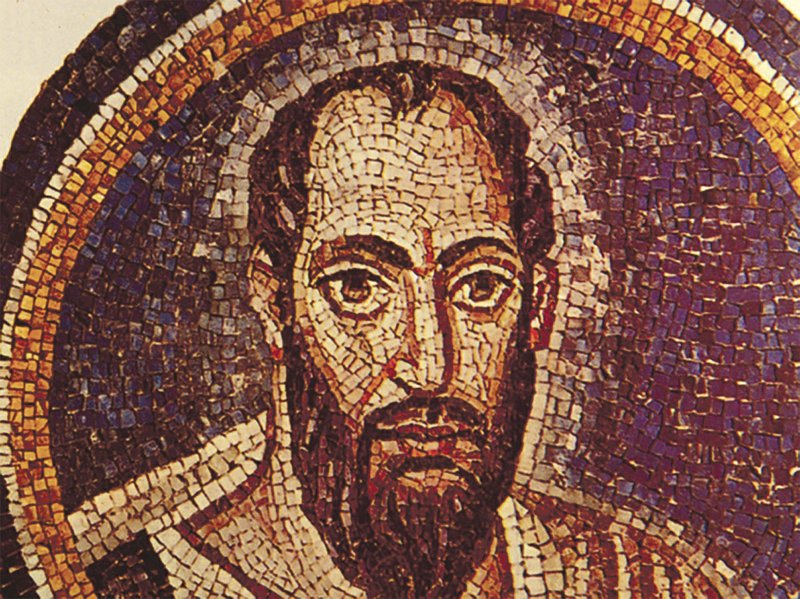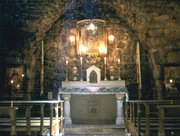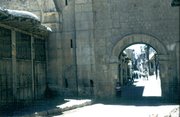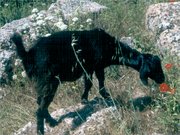"Paul of Tarsus is the second most important person in Christianity," stated the Rev. Paul Maier, a best-selling author and professor of ancient history at Western Michigan State University in Kalamazoo. "He's the co-founder of Christianity."
Maier spoke April 9 at Bella Vista Lutheran Church about St. Paul -- or Saul, as he was called before his dedicated mission work on behalf of Jesus Christ.
Books by Paul Maier
Josephus: The Essential Works (1995)
Eusebius: The Church History (2007)
The Constantine Codex (2011)
A Skeleton in God’s Closet (2012)
More Than a Skeleton (2012)
Pontius Pilate: A Novel (2014)
The Real Jesus of Nazareth: New Evidence from History and Archaeology about Jesus and the Early Christians (2016)
"Paul invaded the main stream," Maier continued. "He was the universalizer."
Maier pointed out, that before Paul's work, Christianity was mainly a Jewish phenomenon, with specially chosen Jews becoming converts. But Paul was not interested in converts and ministered mostly to gentiles.
"Today Christianity is 99 percent gentile," Maier said. "There you can see the importance of Paul's ministries."
Maier listed reasons to support his statement: Paul was the first great missionary to be commissioned by the church at Antioch, and he was the great theologian of the early church.
"Jesus did not give us a book of documents," Maier said. "He left that for the apostles to do. He left it for the disciples to interpret and spread the word."
Maier has spent his life finding data and secular evidence from the ancient world to support the accounts in the New Testament. He relies on information provided by Eusebius of Caesarea -- also known as Eusebius Pamphili, a Roman historian and Christian bishop of Caesarea Maritima about 314 A.D -- and Titus Flavious Josephus, a first-century Jewish scholar and historian, who has added new detail to many biblical accounts.
And on Paul himself he looks to the Book of Acts, written by Luke who traveled with Paul; to the letters penned by Paul to early church fathers and governmental officials; and to archaeological evidence.
"Paul is fun because we have so much tremendous evidence to back up Paul's ministry," Maier said. "The whole thing becomes totally historical when you see the background against which Luke is writing his account and the context. It's a thrilling thing to see. By using all these ancient sources and checking all the archaeological evidence of the places Paul visited, we see a totally, factually believable account that's as strong as anything else in history anywhere. We have better information and so much more evidence on Paul than any secular character in ancient history."
BIOGRAPHY
"Paul was born in Tarsus, as Saul, the name of Israel's first king," Maier began his biography of Paul.
Tarsus (now in Turkey) was in the province of Cilicia, on the northeast corner of the Mediterranean Sea, just 12 miles from the coast. It was a crossroads for traders of many cultures. "What a great place for the future gentile advancement of Christianity to be born," Maier said.
Saul was born a Roman citizen, Maier noted. "And he will use that ace in his deck whenever he has to save himself from imprisonment or scourging -- except at Philippi. He must have forgotten his passport."
Saul's father was a very devout Jew. Saul attended the renowned school at Tarsus, and then went to study in Jerusalem under Gamaliel, a Jewish teacher of law who is held in esteem in both Christian and Jewish histories.
"[Gamaliel] was one of the Pharisee liberals," Maier said. "He didn't vote against Jesus, and he stood up for the apostles persecuted in Jerusalem."
"Leave these men alone! Let them go! For if their purpose or activity is of human origin, it will fail. But if it is from God, you will not be able to stop these men; you will only find yourselves fighting against God."
-- Acts 5:38-39
"The problem was, Saul was a firebrand for his faith [Judaism]," Maier said. "He did not like this Christian heresy. He wanted to stamp it out physically. He was a persecutor of the church. It was almost embarrassing to see his enthusiasm for hunting down Christians."
Saul's first mention in the Bible finds him at the stoning of Stephen. "He didn't throw rocks, but the execution in this fashion pleased Saul," Maier continued.
Stephen was theologically the best at preaching that Jesus was the Messiah, Maier said, and Stephen had spoken at the synagogue in Cilicia, where Paul grew up.
"I bet this hot head [Saul] got up and tried to argue with Stephen. I bet Stephen absolutely trounced him, and I'm sure young Saul was ticked off at Stephen anyway. Stephen had publicly embarrassed him at the synagogue. Again, this is only hinted at in the Scripture, but it's the kind of thing I think you can find."
Saul received permission from the Jewish priests to go block by block, house by house, to hunt Christians. Then credentials from Roman senators allowed him to travel to Damascus to arrest Christians and bring them back for trial in Jerusalem.
"That one used to bother me," Maier said. "Damascus is in a different country. How could a young Jewish leader come across with a guard and export Christians in a foreign country? It's impossible."
Then Maier came across a treaty, an extradition agreement. If a felon in Jerusalem was wanted in Arabia, a renegade Jew would be sent back to Jerusalem from Arabia for trial. "Not gentile," Maier pointed out. "Saul was looking for Jewish converts to Christianity."
ROAD TO DAMASCUS
But on that road to Jerusalem, Saul -- and history -- were changed forever.
"The greatest conversion in history takes place on the Damascus road," Maier said. "You all know the account. Paul tells it three times in the Book of Acts -- or Luke tells it for Paul."
As he neared Damascus on his journey, suddenly a light from heaven flashed around him. He fell to the ground and heard a voice say to him, "Saul, Saul, why do you persecute me?"
"Who are you, Lord?" Saul asked.
-- Acts 9:3-4
"For years I didn't understand why [Saul was calling the voice] 'Lord.' He didn't know who was speaking to him," Maier shared.
Maier explained the word "lord" in Greek has a double meaning -- as it does in Spanish with "senor" and German with "herr." And in England, a man of authority would be called "lord," the same as the "Lord God."
"So all Saul is saying is, 'Who are you, person in authority? Are you some kind of ruler?'," Maier continued. "He doesn't know it's Jesus yet because Jesus hasn't identified himself."
I am Jesus, whom you are persecuting.
-- Acts 9:5
"Can you just imagine what was going through Saul's mind," Maier asked. "It's not just embarrassment -- I mean, it's utter horror. I can just see his mind turning over."
Saul also lost his sight on that road and was led into town by the hand of the three men traveling with him. For three days in Damascus, at the house of Judas, Saul did not eat or drink, contemplating his blindness and everything he'd done in his life "and finding that it's been all, evidently, diametrically wrong," Maier provides commentary.
In Damascus, God calls Ananias, the leader of the Christian church in Damascus, to meet Saul at the house of Judas on "a street called Straight."
"Can you imagine what this poor bishop of Damascus thinks at hearing this word that he's supposed to baptize Al Capone, you know, the real enemy of the faith?" Maier said. "Ananius is probably one of the ones Saul came to arrest.
"Anyway, Ananias heals him of his blindness and indeed commissions [Paul as a missionary] from that point on -- and the conversion was complete."
Maier uses the experience of his own travels in the Holy Land to support the story.
"We also traveled the Jerusalem road to Damascus," Maier began. "And when we got to Damascus, there was a town by the side of the road, but we did not think anything of it. We kept going to Damascus."
Maier's first view of the Damascus skyline showed a sea of mosques, broken only with a single cross. A Catholic priest ran a mission there.
"We asked him how he hoped to have a mission in the heart of Islam, when Islam is most difficult of all religions to pry people away from, " Maier relates. "He said, 'We have to.'"
The name of that small town outside Damascus meant "the vision" in the local language and had been called that since the second century, Maier heard from the priest.
"You see, he talks about there, you have a place, named for a miracle," Maier said. "I think that's kind of interesting. In terms of authenticity of something taking place, when you rename a town for it, that's pretty impressive.
"And the 'street called Straight,'" he continued. "It's been there for 2,000 years. The main east-west causeway in the Old City of Damascus today is called Straight Street. Emperor Hadrian during his tour (117 to 138 A.D.) erected a triple gateway at the eastern end of that main street. It remains today in ruins."
Two blocks farther west of the eastern Hadrian wall, on that same "street of Straight," a church houses a shrine marking it as the House of Judas, where Saul sat blinded. The shrine stands one story down from the street, in the archaeological level dating to the first century. The church contains a mosaic of Saul receiving his sight at the hands of Ananius, Maier reported.
"It's pretty strong authenticity," he said. "The record of the Syrian church there is intact. It's always been the spot. The records just perfectly coincide with the Book of Acts at that point."
And when comparing what's found in ancient history with what's included in the Scriptures, "the versions hold up beautifully, both sacred and secular," Maier said.
From his conversion, Paul spends the rest of his life traveling the ancient world, spreading the story of Jesus in three mission trips recorded in Acts.
"During this time, Christianity explodes across the world," Maier said. "Paul takes his mission very seriously. He was the missionary to the gentiles and beat the bushes of the ancient world.
"Paul is the reason we are here today under God."
NAN Religion on 04/16/2016




